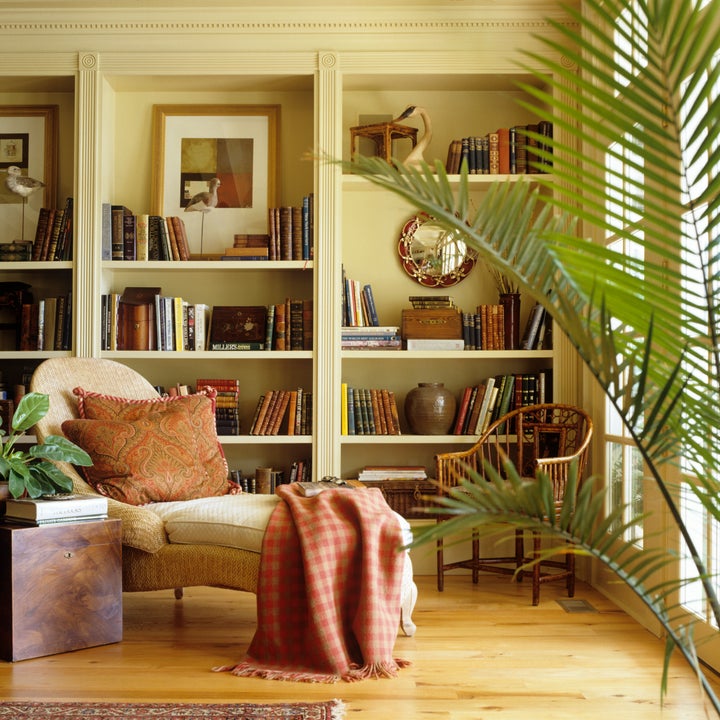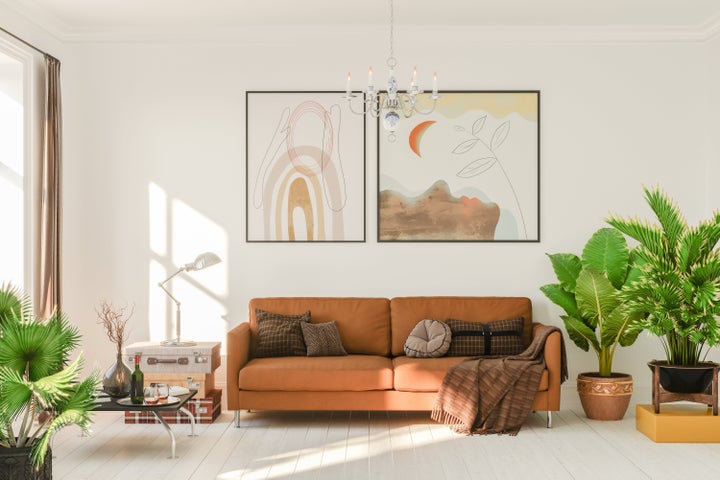
Whether you’re moving into a new home or upgrading your current space, it can be overwhelming to decide how exactly you want to decorate it and make it your own. Does the paint color look too dark? Is the living room too crowded? Does the ambience feel positive and welcoming?
“Having a well-balanced space not only enhances the look and feel … but it also creates a psychological impact,” said Scheherazade Lunn, a certified interior decorator and founder of Lunn Interiors. “Just like [how] a clean home creates a sense of calm … the same can be said about a well-designed space.”
We talked to interior decorators and designers about the one thing they avoid doing when decorating their own homes — and why that makes a difference in creating a space that makes them feel comfortable and happy.
Mistake #1: Selecting The Paint Color Of A Room First
“One [mistake] I always see people [make] … is they [choose their paint color] right away,” said Natasha Habermann, interior designer, decorator and owner of Natasha Habermann Studio.
She suggests this should actually be the last step when decorating your home. Because there are thousands of paint color options, she advises first picking out the decor and accessories you really love and then choosing the paint based on that. For example, even if you know you want a light blue room, it’s easier to match the exact shade once you already have the bedding, rugs and other decorative items you want for the space.
“[Otherwise] you’ll just always be fighting the paint rather than getting the paint to work with everything else that you’ve already selected,” she said.
Beyond looking at the decor and accessories, she also recommends thinking about how you plan to use the room you’ll be painting.
“It’s really about what sort of ambience you’re trying to create in the room,” she added. “Think about the time of day that you’re living in the space.”
You may want a more “bright and upbeat” color for a room where you spend daytime hours, like a kitchen, and a more “cozy” color for where you spend time in the evening, like a bedroom, she said.
Mistake #2: Incorporating Too Many Trends
“I firmly believe in prioritizing timeless pieces over fleeting trends when decorating my home,” Lunn shared. “Trends can be fun, but they shouldn’t be the focal point of your space.”
She recommends adding trends through smaller items that you can refresh later on if you decide, such as decorative throw pillows, lamps and coffee table accessories.
“Larger investment pieces like sofas tend to draw a significant amount of attention in a room, so it’s essential to choose furnishings that will withstand the test of time,” she explained.
Timeless pieces are usually “classic styles with historical significance,” whereas trendy items may have a unique, modern take.
“By blending timeless design with trendy accents, you can create a space that is both stylish and enduring,” she said.
Mistake #3: Overcrowding The Space With Furniture And Accessories
“You never want to overstate the aesthetic of the room by having too much,” said Ron Renner,founder and president of Certified Interior Decorators International (C.I.D.). “Keep it simple with understatement in mind because too much decor, even beautiful decor, can cause stress and confusion.”
So how do you know if you have too much stuff in one room? If it’s difficult to move around without running into furniture or it looks cluttered when you enter, that is a good indication, Renner explained.
It’s also key to avoid overcrowding the space with certain colors and patterns. For example, using too many dark colors can make you feel tired or even depressed, he said. Also mixing a lot of different patterns can create chaos, Lunn added.
“It’s best to limit the number of patterns and find that perfect balance between solid colors and fun patterns,” she advised.

Mistake #4: Ignoring The Functionality Of A Piece
When you’re looking to add a piece of furniture or other item to your home, it’s important to not only think about how it will look but also what purpose it will serve.
Margarita Bravo, interior designer, decorator and owner of her own design studio, explains her thought process when selecting a new piece.
“For example, [for] something as simple as the living room sofa … I want to make sure that it’s comfortable, that it has the right back support [and] that it … fits the entire family,” she said. “Also I want it to be high-performance, so it’s easy to clean and will last.”
After considering the functionality and durability, she also checks that it reflects her style and personality.
Mistake #5: Underthinking Lighting Options
From light fixtures and floor lamps to candles and string lights, there are so many lighting options when it comes to decorating your indoor and outdoor areas.
Raquel Renner, a certified interior decorator and director of membership for C.I.D., said she avoids relying on traditional or standard lighting in her own home.
“Unique lighting fixtures, much like a unique piece of artwork or furniture, add a pleasing aesthetic to a room’s ambiance … beyond just simply providing light,” she said.
For instance, she loves the feel of a chandelier in a kitchen or bathroom or a beautiful pendant light (a single light fixture that hangs from the ceiling) over a nightstand instead of a typical lamp.
Mistake #6: Focusing On How Your Space ‘Should’ Look
A common mistake when decorating is playing it safe and just replicating what you’ve seen at your friends’ houses or trends you’ve seen online, said Holly Hickey Moore, an interior designer, decorator and owner of Holly Hickey Moore Design.
People “try to follow supposed rules and forget that there really are no rules when designing,” she said. “This approach often paralyzes decision-making and leads to safe, uninspired choices.”
Support Free Journalism
Already contributed? Log in to hide these messages.
Instead, she advises trusting your instincts, not overthinking it and decorating in a way that authentically reflects you.
“While we often have to dress and behave a certain way in public or social settings, home is where I can truly be myself … [and] feel confident and comfortable with what surrounds me,” she said.
Support Free Journalism
Already contributed? Log in to hide these messages.